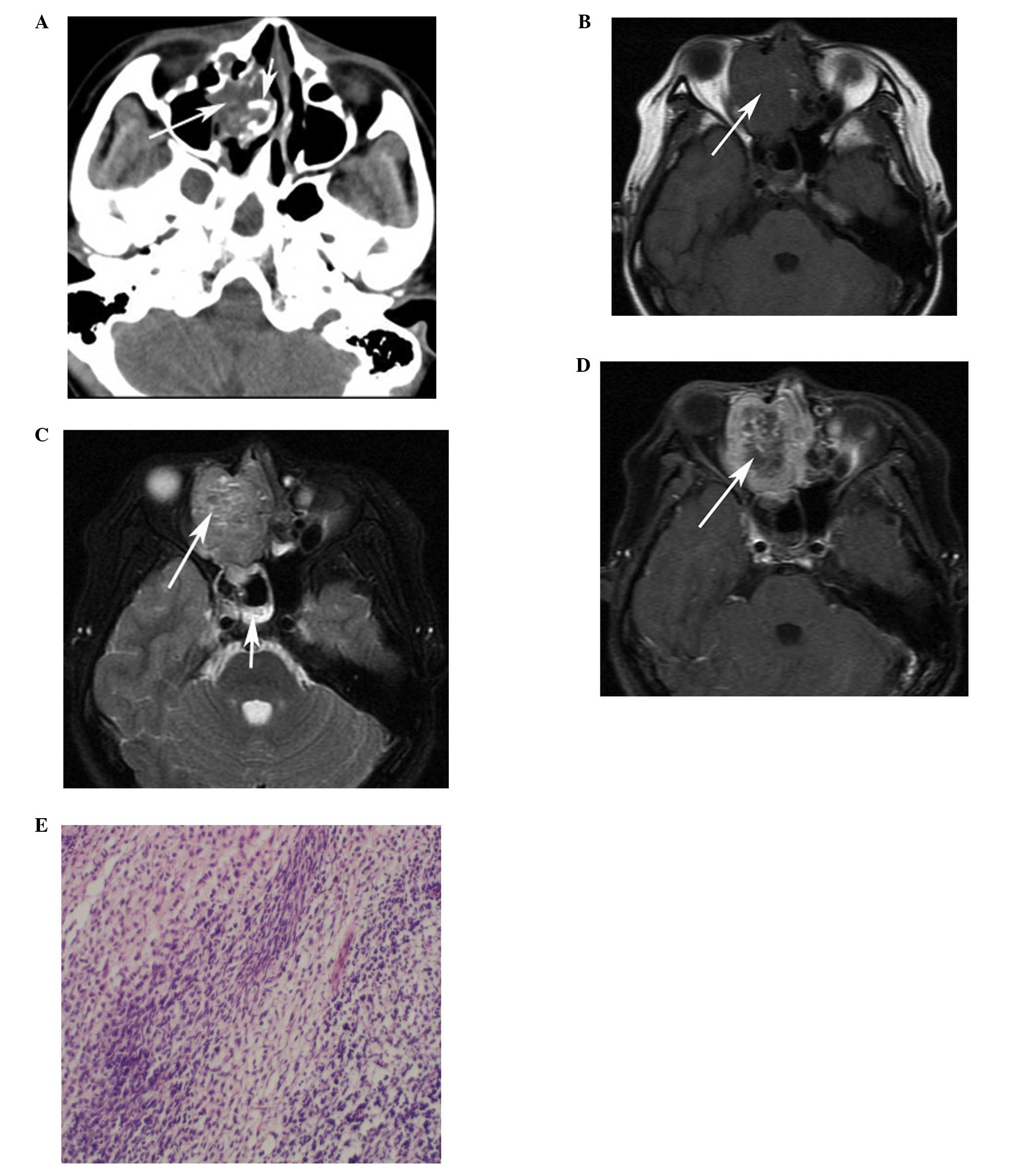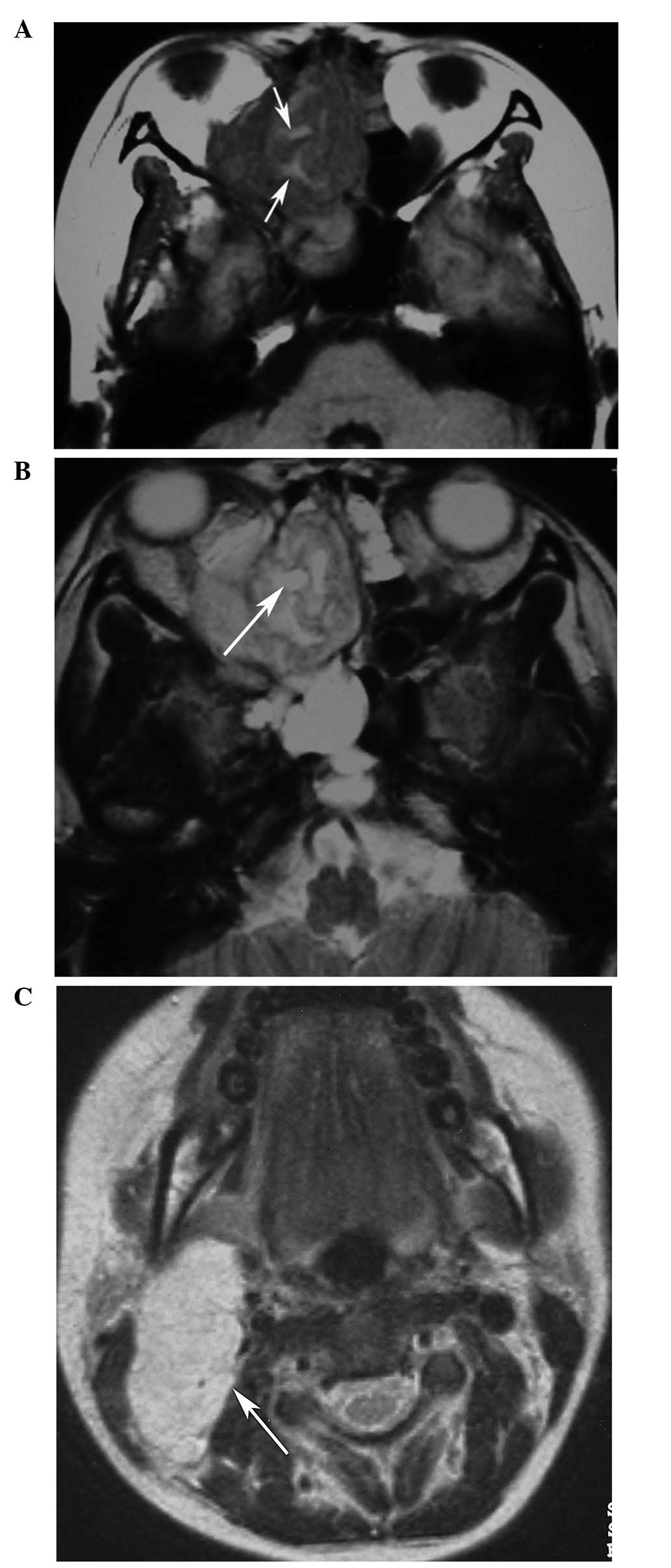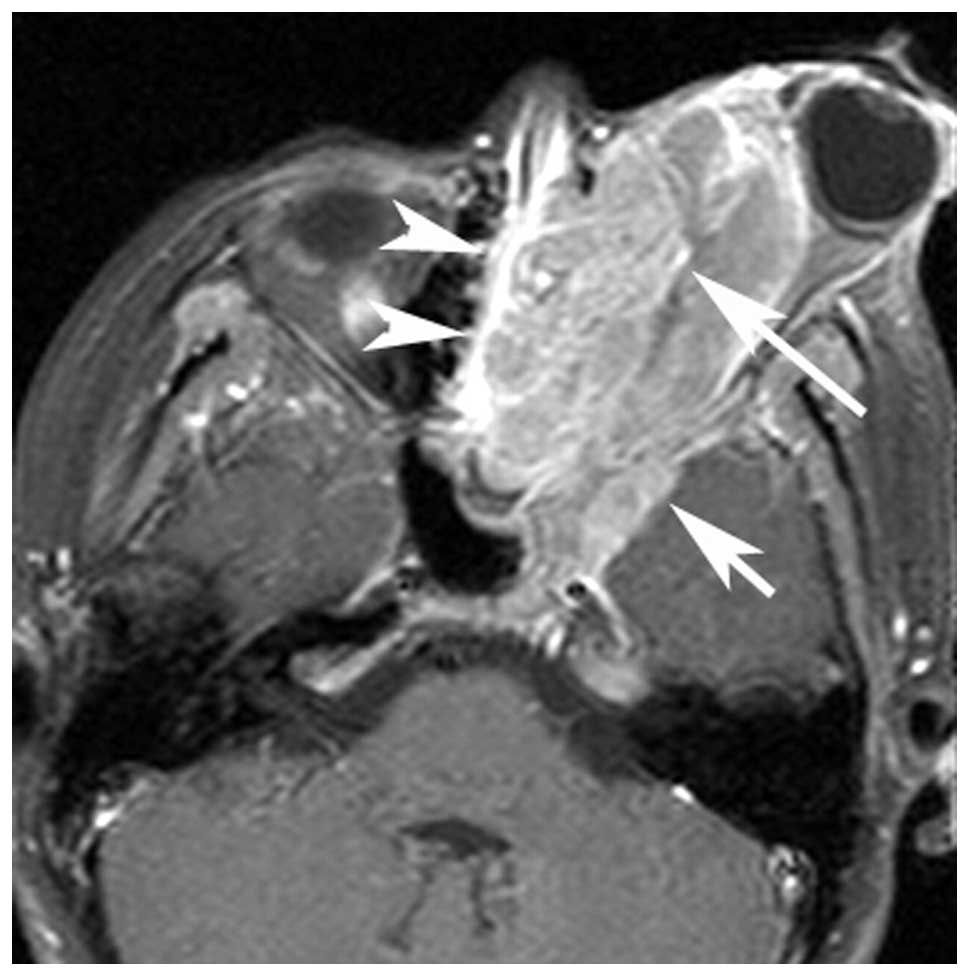Computed tomography and magnetic resonance imaging observations of rhabdomyosarcoma in the head and neck
- Authors:
- Published online on: April 25, 2014 https://doi.org/10.3892/ol.2014.2094
- Pages: 155-160
Metrics:
Total
Views: 0 (Spandidos Publications: | PMC Statistics:
)
Total PDF Downloads: 0 (Spandidos Publications: | PMC Statistics:
)
Abstract
Head and neck (HN) rhabdomyosarcoma (RMS) is an aggressive malignancy, which is rarely encountered and is commonly misdiagnosed as another type of tumor. The aim of the present study was to investigate the computed tomography (CT) and magnetic resonance imaging (MRI) features of HNRMS and analyze the correlations between the imaging observations and the pathological subtypes. A total of 10 HNRMS patients (three males and seven females; median age, 16 years) were reviewed retrospectively by only CT (n=1), only MRI (n=2), as well as CT and MRI (n=7). In addition, the clinical data, imaging observations and pathological results were recorded and analyzed. The origins of the 10 HNRMSs (eight embryonal and two alveolar subtypes) included the ethmoid sinus (n=4), maxillary sinus (n=1), orbit (n=3), nasopharynx (n=1) and frontotemporal subcutaneous area (n=1). On the CT and MRI images, the soft‑tissue masses exhibited ill‑defined borders (n=9), bony destruction (n=10), multi‑cavity growth (n=7) and cervical lymph node metastasis (n=2), whereas calcification and hemorrhaging were not identified. On CT, eight of the HNRMSs appeared slightly hypodense (2/8) or isodense (6/8) with homogeneous enhancement (4/4). On T1‑weighted images (WI), nine tumors exhibited isointensity (9/9) and on T2WI, six tumors demonstrated homogeneous hyperintensity with homogeneous enhancement on contrast‑enhanced (CE)‑T1WI. In addition, three embryonal RMSs, which originated from the ethmoid sinus, exhibited heterogeneous hyperintensity on T2WI and nodule‑shaped enhancement patterns on CE‑T1WI. The results of the present study indicated that MRI may accurately demonstrate the location and extent of HNRMS and that the imaging features of HNRMS may be similar to those of other tumors. However, a tumor exhibiting heterogeneous hyperintensity on T2WI and a nodule‑shaped enhancement pattern on CE‑T1WI in the ethmoid sinus may present specific MRI features, which clearly indicates the botryoid subtype of embryonal RMS.













